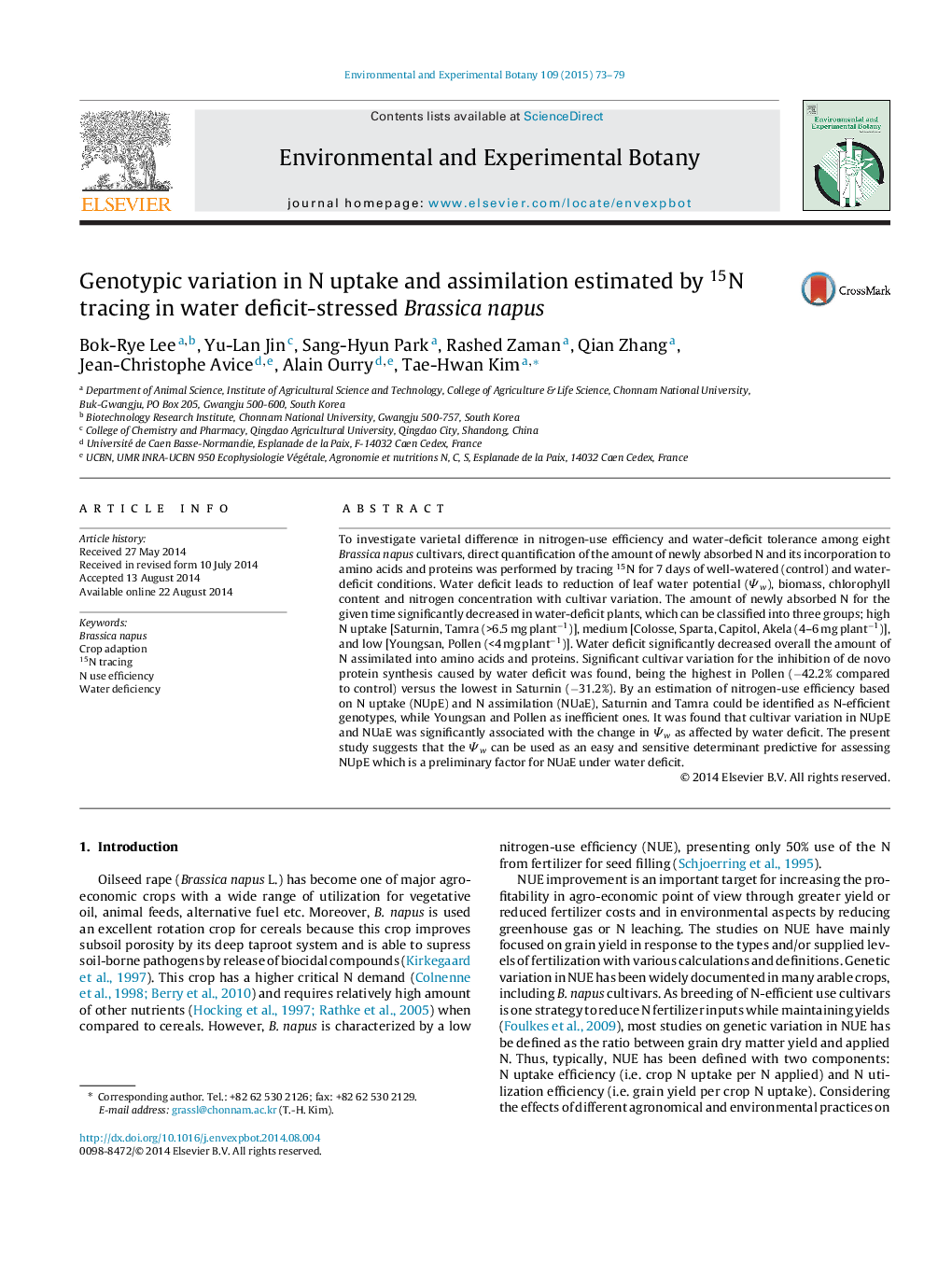| Article ID | Journal | Published Year | Pages | File Type |
|---|---|---|---|---|
| 4554319 | Environmental and Experimental Botany | 2015 | 7 Pages |
Abstract
To investigate varietal difference in nitrogen-use efficiency and water-deficit tolerance among eight Brassica napus cultivars, direct quantification of the amount of newly absorbed N and its incorporation to amino acids and proteins was performed by tracing 15N for 7 days of well-watered (control) and water-deficit conditions. Water deficit leads to reduction of leaf water potential (Ψw), biomass, chlorophyll content and nitrogen concentration with cultivar variation. The amount of newly absorbed N for the given time significantly decreased in water-deficit plants, which can be classified into three groups; high N uptake [Saturnin, Tamra (>6.5 mg plantâ1)], medium [Colosse, Sparta, Capitol, Akela (4-6 mg plantâ1)], and low [Youngsan, Pollen (<4 mg plantâ1)]. Water deficit significantly decreased overall the amount of N assimilated into amino acids and proteins. Significant cultivar variation for the inhibition of de novo protein synthesis caused by water deficit was found, being the highest in Pollen (â42.2% compared to control) versus the lowest in Saturnin (â31.2%). By an estimation of nitrogen-use efficiency based on N uptake (NUpE) and N assimilation (NUaE), Saturnin and Tamra could be identified as N-efficient genotypes, while Youngsan and Pollen as inefficient ones. It was found that cultivar variation in NUpE and NUaE was significantly associated with the change in Ψw as affected by water deficit. The present study suggests that the Ψw can be used as an easy and sensitive determinant predictive for assessing NUpE which is a preliminary factor for NUaE under water deficit.
Related Topics
Life Sciences
Agricultural and Biological Sciences
Ecology, Evolution, Behavior and Systematics
Authors
Bok-Rye Lee, Yu-Lan Jin, Sang-Hyun Park, Rashed Zaman, Qian Zhang, Jean-Christophe Avice, Alain Ourry, Tae-Hwan Kim,
